Review ARISTOCATS by Disney
I have been re-watching the classic Disney animated features in order, starting with SNOW WHITE. Seeing the films chronologically drives home the genius of Walt Disney himself, the mediocre period that followed his passing away, the wonder of the Disney Renaissance in the days of Howard Ashman and Alan Menken, the sad and sick degeneration thereafter, first into blandness, and next into wokeness.
ARISTOCATS (1970) is the first feature length animation put out by the studio after Walt’s passing, and, I am sad to report, it shows.
The animation quality is haphazard, the plot is slipshod, the characters are slapdash, the humor is slapstick, the scenes are uninteresting, the musical score is unmemorable, with the exception of one jazz piece, rousing but unfortunately pointless. The film is not recommended.
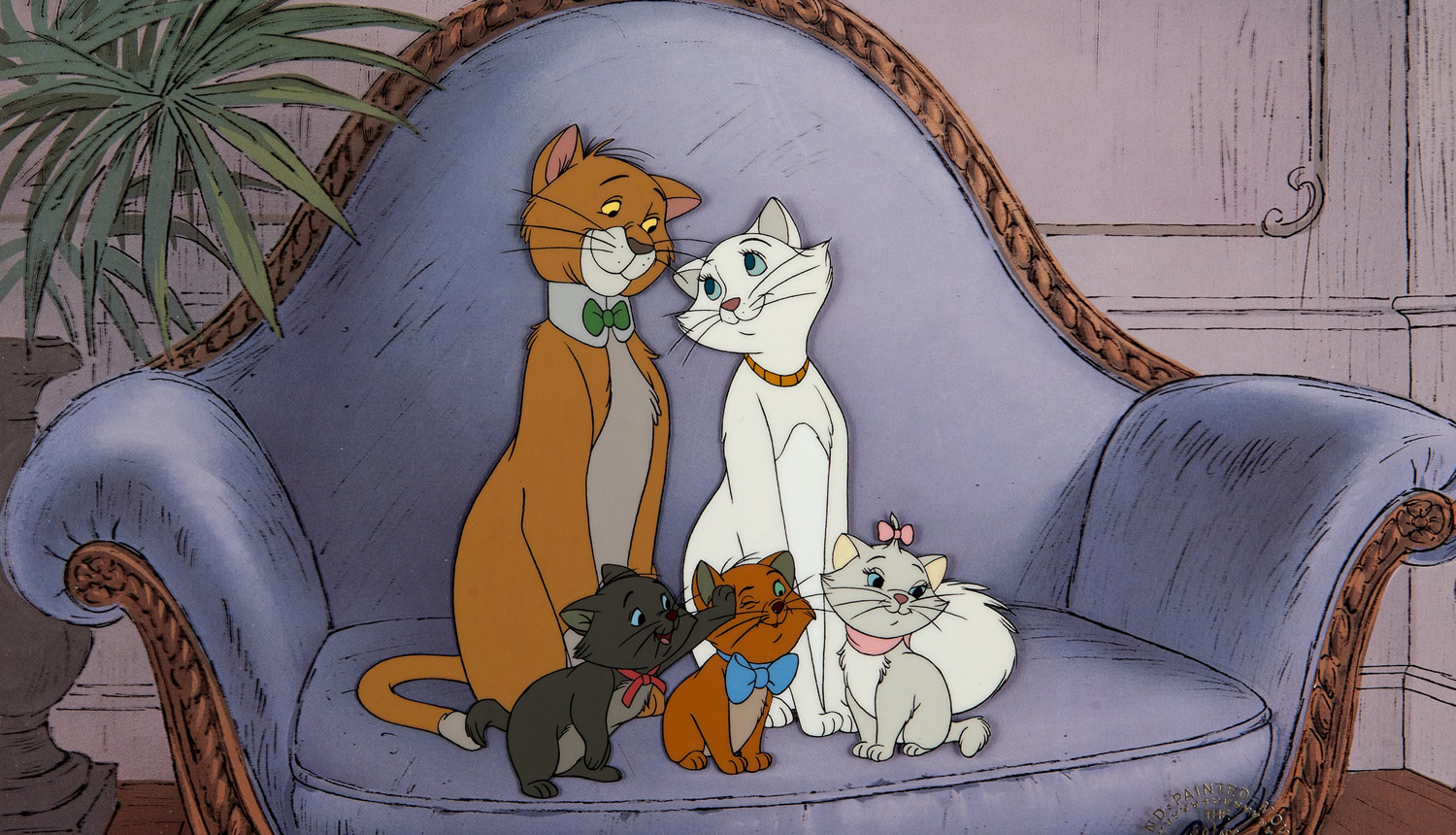
Despite all drawbacks, the voice acting can be complimented: Eva Gabor is simply charming as the voice of Duchess, the sleek and elegant white Turkish Angora (for the record, the same breed of cat as the white cat petted by Ernst Stavro Blofeld), and Phil Harris is avuncular and cheery as the silver-tongued and streetwise Tomas O’Malley the Alley Cat (for the record, his sole voice role not playing a bear).
Mice, alleys cats, and houndogs are likewise voiced by skilled character actors of longstanding repute in Hollywood, such as Sterling Holloway, Scatman Crothers, Pat Buttram, Thurl Ravenscroft, and George Lindsey of Gomer Pyle fame. The drunk uncle goose is the last voice work of the talented Bill Thompson who portrayed White Rabbit and Mr. Smee. The kittens are voiced by convincing child actors, without sounding stiff or forced, but they are never given any lines demanding emotions, aside from a mild pout or mild giggle or mild fretfulness.
ARISTOCATS is a post-Walt attempt to copy 101 DALMATIONS and LADY AND THE TRAMP, except with Parisian cats rather than London dogs. It copies the surface features and turn-of-the-century setting of those two better films, without recapturing the drama and theme, meanwhile removing any elements too complex or frightening for youngest children, such as a plot-twist, or a villain. The result is like twice-reheated leftovers: soggy, limp, stale, bland.
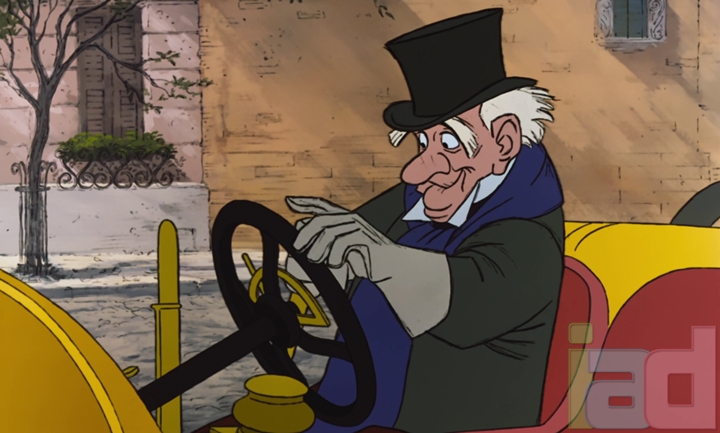
The story begins with a slow and unfunny bit of humor as a wobbly, cheerful, nearsighted and senile octogenarian, in the style of Mr. Magoo, drives recklessly and jig-dances to visit a retired opera star, unwittingly battering and humiliating the comedy-relief butler who tries to escort him up a tedious flight of marble stairs. The scene is overlong and leads nowhere, and this sets the tone for the remainder of the film.
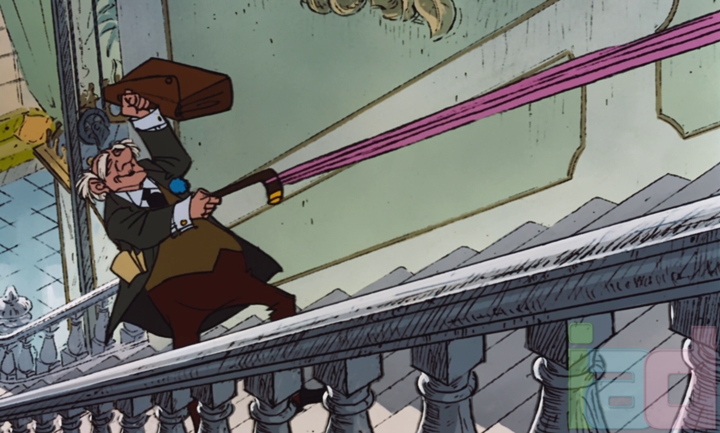
The plot, such as it is, concerns a wealthy old widow who bequeaths her fortune to her pet cat, Duchess, and her three kittens, who are drugged by the comedy-relief butler and abandoned in the countryside, who also stands to inherit. Here they are met by Thomas O’Malley the Alley Cat, who, after a brief song, falls in love with Duchess, wins her heart, and leads the cat and kittens back to Paris. The best part of Tom is his name, which he recites in song: Abraham de Lacy Giuseppe Casey Thomas O’Malley.
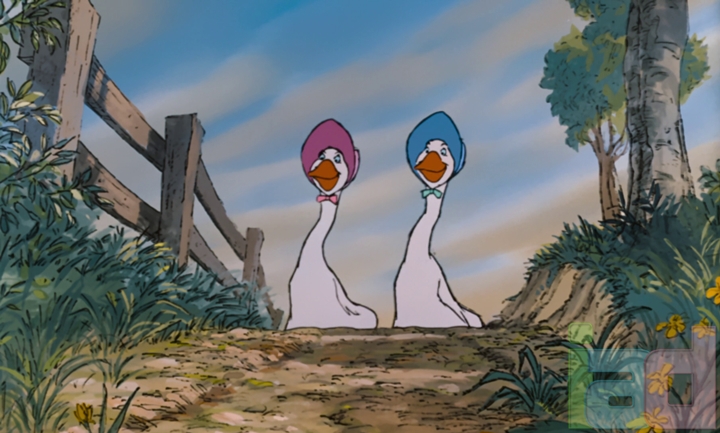
There are tedious episodes when Duchess, towing her kittens, meets two giddy geese, their drunk uncle goose, and then meets a jazz band of stray cats. Even more tedious episodes involve the comedy-relief butler attempting to conceal his crime by retrieving his umbrella from two comedy-relief houndogs with (for some reason) thick hillbilly accents.

These endless scenes lend nothing to the plot, and could have been removed or reordered with no change to the rest of the film. They are filler.
Once back in Paris, instead of going straight home, we are treated to a scene of a clowder of jazz musicians smashing their instruments and destroying the delipidated house where they squat. This is the lively jazz scene mentioned above, and the only memorable song. It is built around the play on words of jazzbos being called “cats.” We get to see cats in swing dance, and the footage will be lazily reused when vixen Maid Marion dances with fox Robin Hood in the next Disney feature flick. It adds nothing to the plot, and nothing comes of it. It is merely a musical interlude added for the sake of the jazz number.
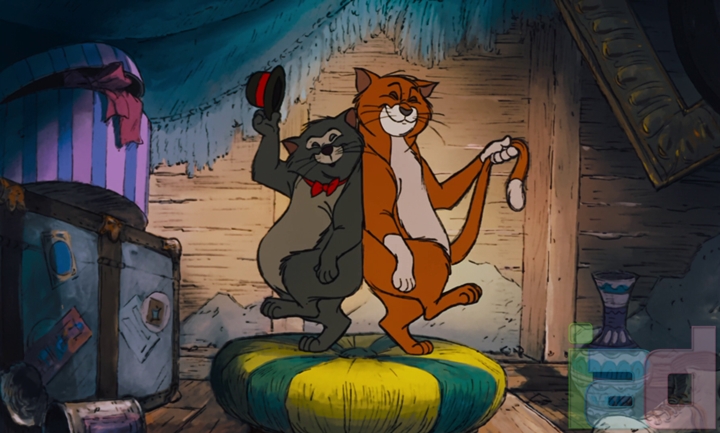
Tom and Duchess canoodle under the moon while the child spy on them, giggling; he invites her to live on the streets with him; she invites him to live in the mansion with her. This could have formed a conflict, but it is resolved by being ignored: Tom will be adopted by the old human widow, and wed to the young cat widow, without any decision on his part or theirs being foreshadowed, portrayed, or mentioned.
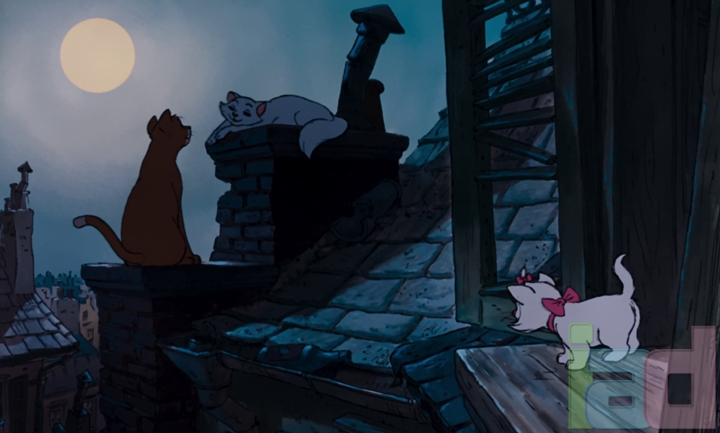
Back at the mansion, the butler makes a last attempt to abduct the cats, and locks them in a trunk, to ship them to Timbuktu. Meanwhile a friendly mouse, Roquefort, searches the alleys for Tom, seeking aid, but is captured and menaced by the jazz cats, who threaten to kill and eat him until he can remember Tom’s name – which he comically forgets until the last moment.
Then the jazz cats race to the mansion, attack the butler, and the mouse safe-cracks the pad-lock on the trunk and frees the trapped kittens. The butler is thrown into the trunk by the cats and shipped to Timbuktu.
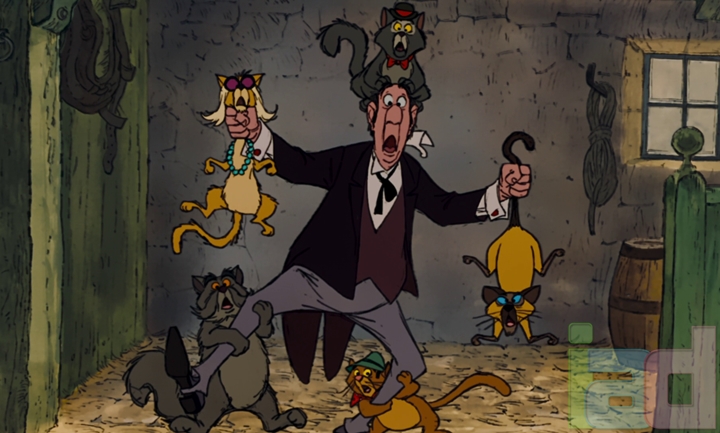
In a final scene, Tom is adopted by the widow, and her lawyer is rewriting the will to excise the butler, whose villainy is never discovered by the widow.
As a villain, the butler is entirely incompetent and unmenacing. He cannot even threaten a basket of kittens. As comedy relief, he is singularly unfunny. If he were cruel or haughty or high-handed, seeing him humiliated by repeated slapstick might have a comedic appeal: but he is a man who is put-upon, clumsy, and dull-witted, so it is more like seeing life dump misfortunate on a dunce.
The plot is slipshod. In the opening, for example, the butler overhears that the old widow will leave her fortune to the cats until their deaths, whereupon he inherits. Why this would prompt him to cat-napping is unexplained: once the old widow is dead, the cats have no voice to complain if he uses the funds to live how he would, and if they did complain, he could kill them then.
Indeed, the whole tedious scene where he has poisoned the cat’s soup was underwhelming to me, as I thought he meant to kill them, not merely to drug them asleep. The scene could have had some tension if the kittens had noticed the friendly mouse with whom they shared their meal, being smaller, had succumbed first. An overlooked warning could have created a question as to whether the cats would be poisoned. But, no, there was no tension, and no point in having the mouse in the scene.
In the midsection, the odyssey back to Paris has no menace and no charm. There is no dramatic scene, as in 101 DALMATIONS, where loving parents are trekking through dark woods or driving snow, being hunted by criminals who mean to kill them, attempting to save not only their own starving and shivering children, but eighty-seven or so orphan puppies they are too kind-hearted to abandon. The Dalmatian puppies roll in soot to disguise their coats, and walk boldly past the devilish gaze of the puppy-killing villainess, who is literally named De Vil.
Contrariwise, Duchess is never required to display courage or cunning. I honestly do not recall whether the kittens in ARISTOCATS even skip a meal. If they do, the inconvenience is solved without drama or cleverness in short order.
Again, why the Butler abandons the cats by the riverside rather than drown them in the river is unclear. Had there been a scene where he were tempted to do so, but rejected the notion, that would have at least been a bit of character development.
But the kittens are left under a bridge on a road leading back to Paris, amid a pleasant countryside. No Cruella de Vil in a monstrous automobile is hunting for them, indeed, if anything, the police and the public may well be — at least, the news of the cat-napping was front-page, above the fold, lead story in the newspaper.
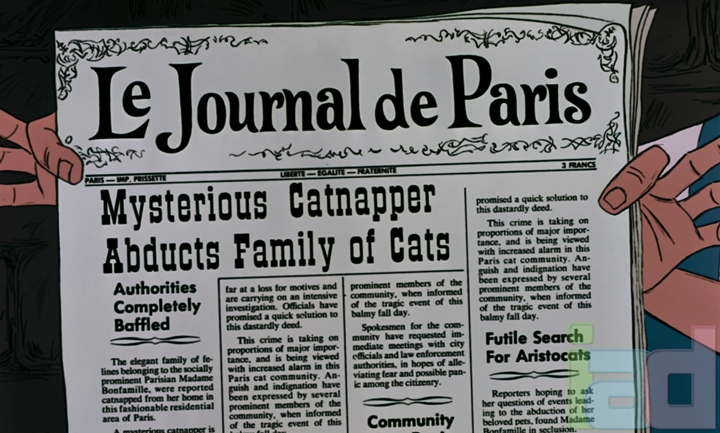
I must pause for an odd compliment. If one freeze-frames the shot of the open newspaper, the entire text of the news story is legible, written out in complete sentences actually describing the widow and the crime. This is not mere lorem ipsum text or stray marks. So some writer at Disney painstakingly composed this for a shot meant to be flashed across a movie screen in an eyeblink. Would that the same dedication to this level of detail had been present in the script itself. Then, perhaps, some writer on the staff would have entertained the notion of putting some risk, tension, drama, or entertainment into the script.
In the film 101 DALMATIONS, if the puppies are caught, they will be slain and skinned and made into a coat. In ARISTOCATS, if the kittens are caught by the butler, he will send them abroad, to prevent them from inheriting money kittens do not need and cannot use.
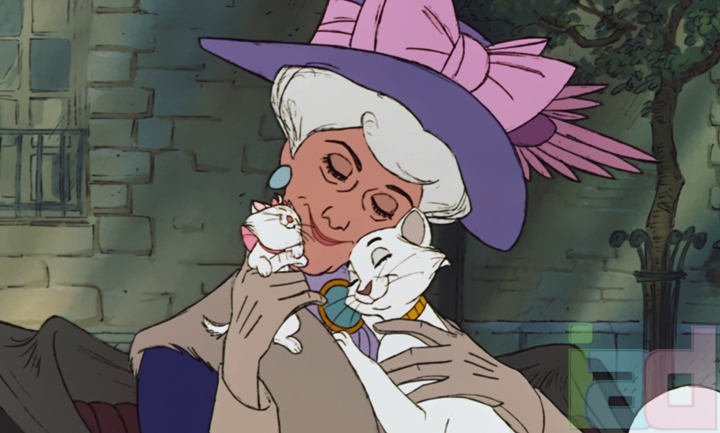
Other scenes float into view like Sargasso weed clouds, fouling the propellers of narrative, and slowing the progress. There is one scene where we see the widow sorrowing off the loss of her cats, who are her only companions. The scene is a static one. No new insight into her character is displayed.
The friendly mouse has a scene where he rushes out to search Paris for the missing cats, but nothing comes of this. Later, when he learns the butler is to blame, he hides in his broken motorcycle tail-light, hoping to stowaway and discover the whereabouts of the abductees, but instead he falls out of the wobbling bike going over a bump, and lands on the ground. Nothing is accomplished by this scene.
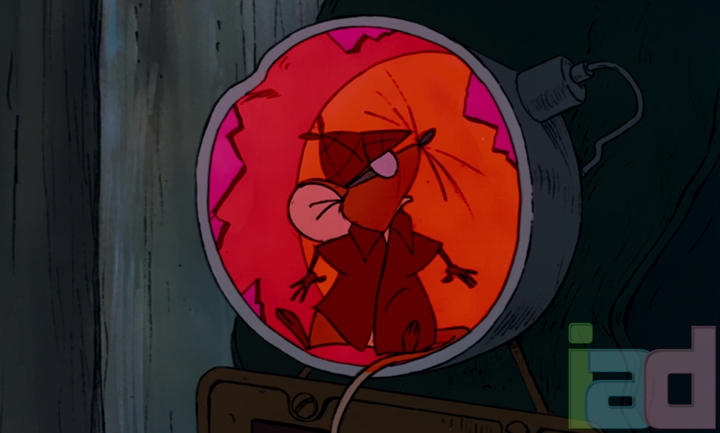
Indeed, only point of having the butler race out again on his motor-bike is to have him irked once again by the hillbilly houndogs. The whole slapstick by-play is pointless and repeated pointlessly. The dogs harass the butler by taking comedy-relief chomps at the seat of his pants and stealing his motorcycle sidecar, but for some reason, he never thinks to belabor them with a cudgel or blast them with a shotgun. The scene where Belle in BEAUTY AND THE BEAST attempts to fend off ravening wolves in the snow with a stick is dramatic and scary. The scene of slapstick harassment of the dimwitted butler by dimwitted houndogs who steal his hat is neither.
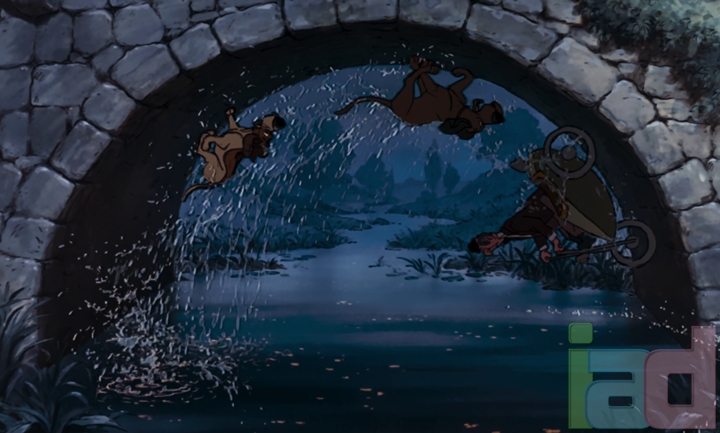
The houndogs are not attempting to protect the cats, nor even aware of them, nor is the butler ever in any real danger of his crime coming to light. There would be heroism if the dogs protected the cats, or there would be tension if there were risk of the criminal being caught, but there was neither. The scene was merely an elaborate slapstick: as if we saw a bank-robber sneaking away down a dark alley, only to slip in a mud puddle and fall face-first in a trashcan.
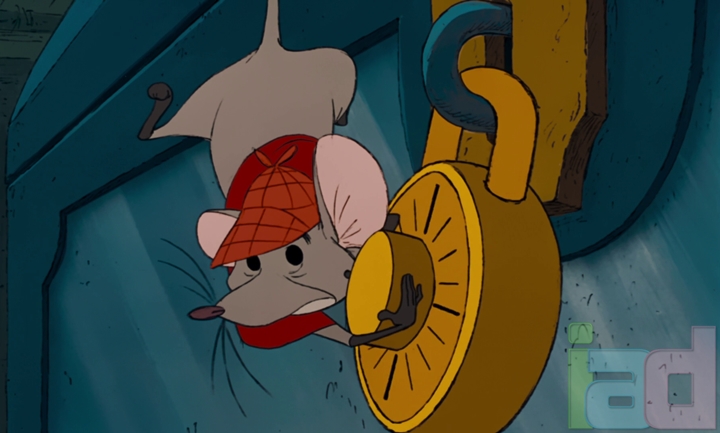
In the climax, why the friendly mouse needed to risk life and limb finding and cajoling jazz cats when he could have cracked the lock on the trunk to free the trapped kittens at any time is not explained, nor how he learned this skill. The butler is pushed into the trunk by the jazz cats, and it locks itself, and falls into the street just in time for a passing mail cart to see it, pick it up, and ship it to Timbuktu.
The characters are slapdash. Three kittens are introduced at their piano lessons and painting lessons, including a forgettable song number. Like the Siamese Cats in LADY AND THE TRAMP, they vandalize the room, with the difference that these are the allegedly the good guys. Apparently, being messy is supposed to be endearing rather than annoying.
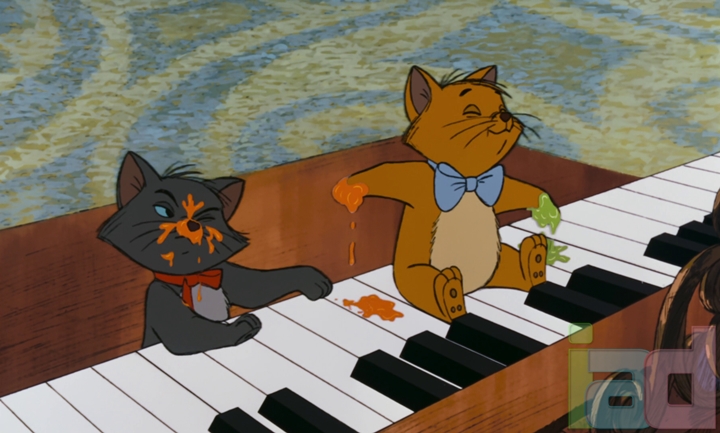
The tedious scene establishes that the three kittens have no personality traits, aside from being cute: one is scrappy, one is a girl, and the third I cannot recall.
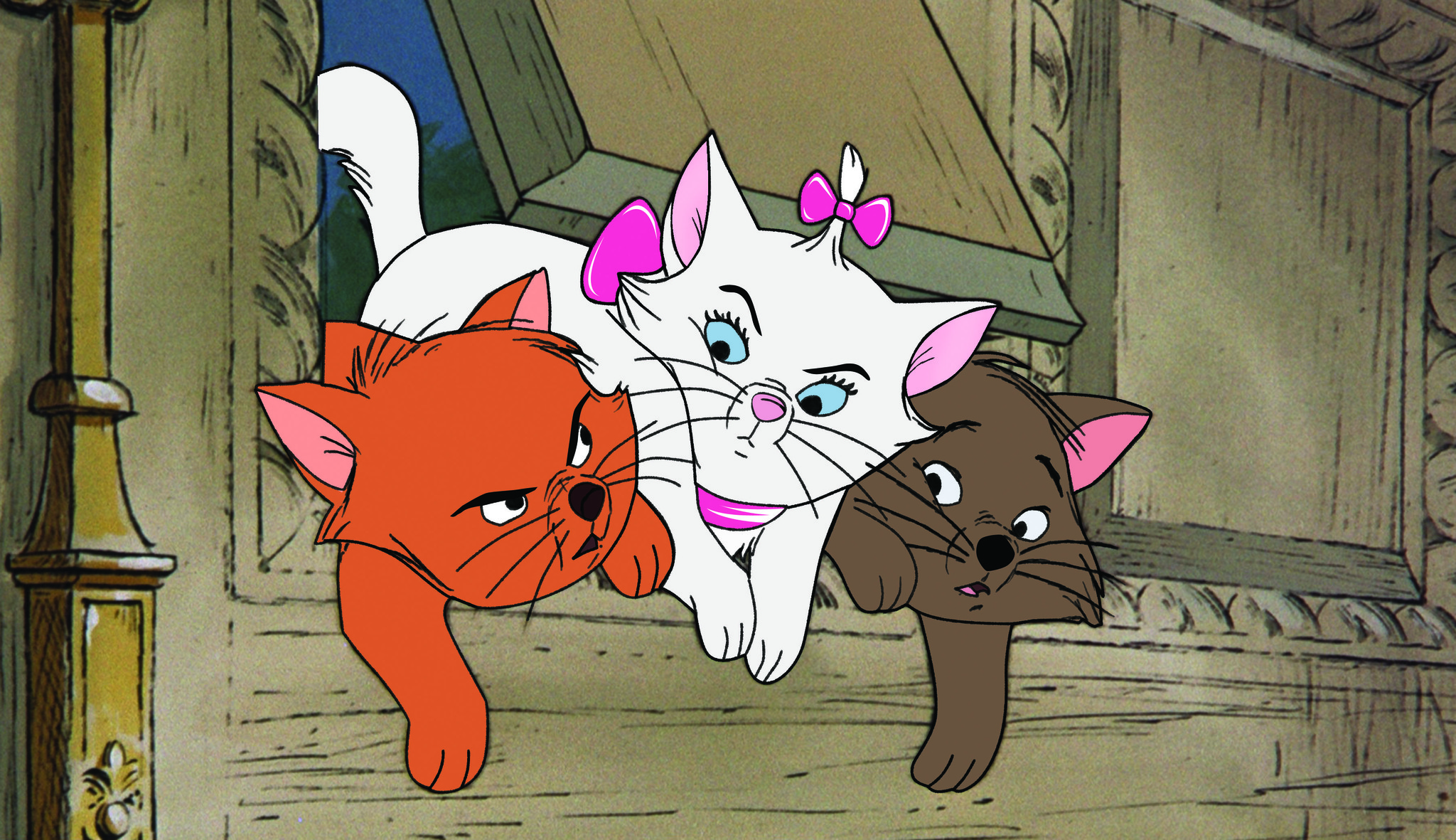
Duchess and Tom have one-dimensional traits: she is elegant, and he a lovable rogue. Except that he never does anything roguish.
Likewise, the lawyer, the widow, the butler, and the houndogs all have a one-word description to sum their characters, from which they never deviate. The lawyer is goofy, the widow aristocratic, the butler self-pitying, the houndogs are hicks. The mouse is nice. The jazz cats are cool. One could not devise a stock-character more cardboard if one tried.
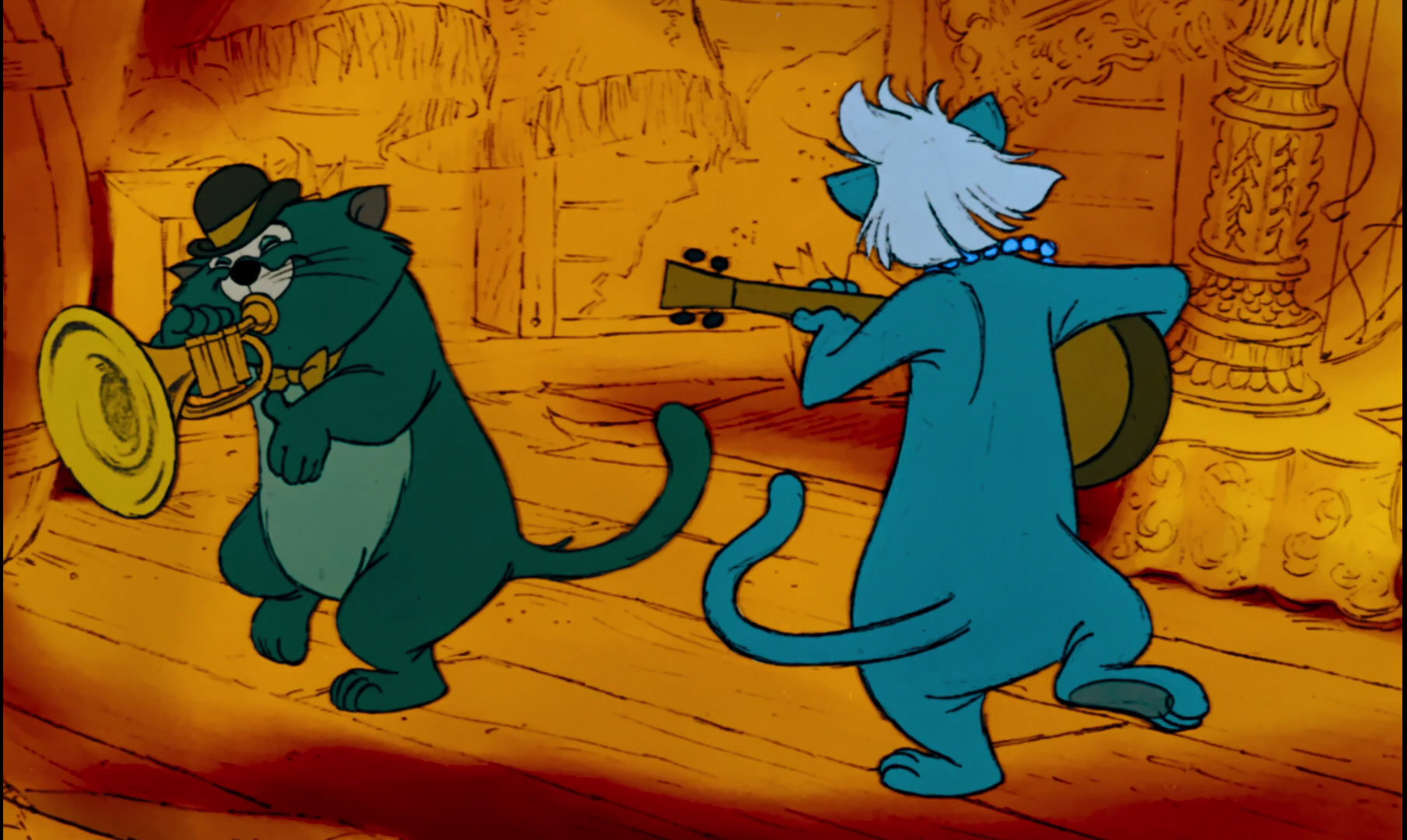
Each jazz cat is from a different nation, and each speaks with an outrageous accent, and wears hat or buck teeth or something to signify his origin. The art of having a number of characters each having a single district trait or schtick is not itself a bad thing: the Seven Dwarves from SNOW WHITE AND THE SEVEN DWARVES, for example, each have a single defining trait after which they are named. But these are well defined, have conflicts and character arcs. They are solid enough to cast shadows, so to speak. The jazz cats are not.
In LADY AND THE TRAMP, the heart of the film was that the high-class dame was being drawn into the Tramp’s freewheeling low-class world, ending up in a muzzle or in jail, while he was tempted and drawn into domestication by the ladylike Lady: a picture-perfect example of the mating dance, portrayed simply enough for children to grasp. But there were actually scenes where the lure and the resistance were put on stage, good and bad, including one where the Tramp chases chickens out of sheer sport and high spirits, endangering her, as opposed to another where he protects her from bigger dogs, saving her.
In this film, there is a line or two in song or dialog where the cats talk about there being a possible problem with their instant and unexplained romance, but it never eventuates. Tom says he does not trust humans, but he is not shown not trusting them.
The romantic subplot is nonexistent. Duchess and Tom mutually attracted when first they meet, and no obstacle presents itself to bar the way of true love. He spins a line of blarney, and she buys it. There is no family feud, no evil witch or misunderstood identities, no pride and no prejudice. But neither is there anything in particular which should attract the two to each other, aside from Eva Gabor’s exotic accent.
More to the point, the fact that she is aristocratic — hence the name of the film — and he is an alley cat — hence his name — which should have been the main obstacle of their romance is never even brought up. If there is a line where he wonders if she is too high class for him, I cannot recall it to mind.
This absence of tension or plot-motion is most evident in the one scene where it should have been present: when Duchess meets the freeloading jazzbo cats. Their self-congratulatory song lyrics mock the type of square, old-fashioned music that, for some reason, these selfsame jazz cats find overwhelmingly mesmerizing when Duchess is playing on the harp.
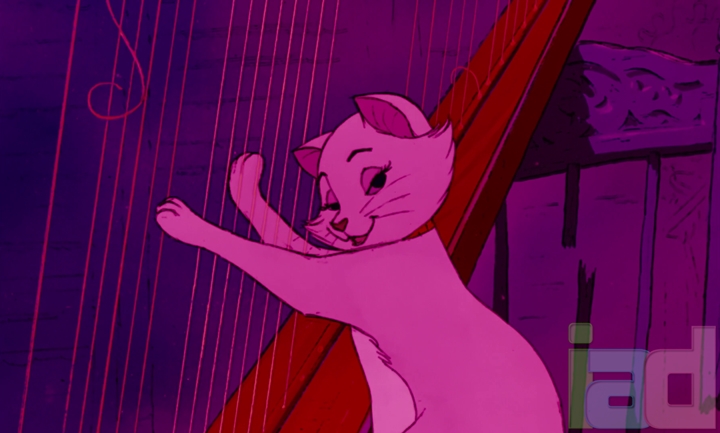
This scene could have been a case of jazz cats being snobbish about classical music, or classy cat being snobbish about jazz music, and one slowly learns to appreciate the other. But, no, like with the romance encountering trivial obstacles, or none, or the journey home being a walking tour rather than a dangerous trek, no difference of taste, or class, or background are even mentioned.
For that matter, the father of the three kittens in never mentioned: Duchess is not a virgin, and this is not her first love, so it seems odd that there is not even a nod of acknowledgement in this direction. “You know, I can never replace your husband, Duke, but in my own way….” “Shush now, dahling! He was what he was, and you are what you are … and my children could use a man about the house…” Or something. Characters, to seem real, are supposed to have some sort of background.
Speaking of background, when doing background research for this column, I came across an interesting tidbit about the film’s origin. It was originally meant to be a live-action two-parter for Disney’s highly popular television show. The original conceit of the plot was that the cat would learn of the butler’s wicked design against them, and run to hide in various famous landmarks of Paris, encountering local color. The thing was supposed to be French in setting and theme.
Instead, this bland cartoon has no one and nothing particularly Gallic or Parisian about it, aside from the one short bit played of a Bizet opera on the phonograph. It could otherwise have taken place in any place or time circa the turn of the century. None of the characters are French: Tom, to judge by his name, is French Italian German Irish and Irish again, not to mention Abraham is Hebrew and Thomas is Aramaic.
The geese are English, the houndogs are Southern hillbillies. Each of the jazz cats is from a different nation and race, and at least one, to judge from his beads and sunglasses, is from the 1960s, eighty years in the future; but they all enjoy a music style decades before it was invented, complete with swing dancing. Eva Gabor has a clearly Hungarian accent.
As for the theme or point, there is none. A story about Dalmatian dogs trying to rescue their children, and ending up rescuing a hundred orphans, is a story about parental duty and philanthropic love; a story about a lady and a hobo tells that love conquers all divisions of class and rank. A story, to be a story, has to be a connected series of events, where one thing leads to another. But these scenes are maddingly disconnected one from the next.
The only story here is that when a company tries to recapture its past glory, but merely copies the surface features mechanically, unimaginatively, the film is an empty mockery.
To be sure, every Disney film will have someone to whom it is his favorite childhood memory. But, regardless, there are better and worse films made with more skill or less. This is one of the less.
